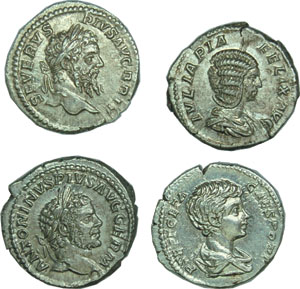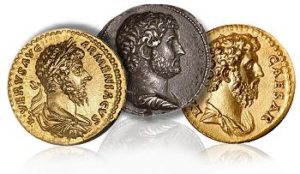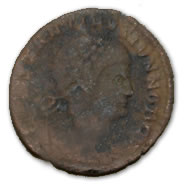Roman Coins and Money: The ancient Rome coins played a pivotal role in the economic exchange during the ancient Roman commerce. The ancient Roman coins were used from the middle of the third century B.C. to the middle of the third century A.D.
Ancient Roman Coins and Money
The ancient Roman currency comprised of the coins including the aureus (gold), the denarius (silver), the sestertius and the dupondius (bronze). These coins were popularly known as the Roman provincial coins.

Roman Empire currencies solidus
During the third century, certain monetary reforms took place which led to the genesis of denominations. For instance, as a consequence of such fiscal amendments, denominations like the argenteus (silver) and the follis (silvered bronze). After these reforms, the ancient Roman coinage consisted of mainly of the gold solidus and small bronze denominations.
What were Roman coins called
The ancient Roman coins had intrinsic value. Though the coins were composed of precious metals, yet the value of the coin was higher than its precious metal content. A guesstimate of the value of the denarius ranges from 1.6 to 2.85 times its metal composition.

Roman Money facts
Basically, not all the coins that circulated in the primeval Roman times were composed of precious metal content because it was inconvenient and practically infeasible for everyday purchase and exchange. A dichotomy existed between the coins having an intrinsic value and those with only the token value.
The ancient Roman Empire envisaged a division in the authority of minting coins of particular metals. Several local authorities were permitted to mint only bronze coins and were unauthorized to mint silver currency.

Ancient Roman Money
Besides, contributing towards the economic aspect, the ancient Roman coinage also played an integral part towards conveying an idea by way of imagery or inscriptions on the minted coins. The interpretation of imagery on the coins was purely subjective and was limited in diversity, confining the inscriptions to that of the Roman state only.
The onus of deciding which imagery was to be inscribed on the coin was vested in a committee of Tresviri Monetales (‘trio of money men’) and young statesmen who aspired to be senators.
The imagery on coins notched up an important step when Julius Caesar issued coins having his portrait inscribed on them. Caesar’s seminal coinage featured a living individual’s image which became a legal trend in 44 B.C. However with the transition in the reign of Roman Emperors in due course of time the ancient Roman coinage history also took a different course.




